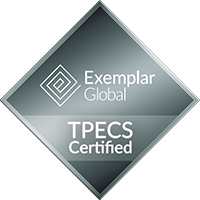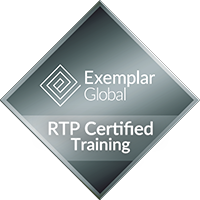| Approx Course Duration *: | Equivalent to Approx. 1hr |
| Access to Course Content: | 18 Months from the date of enrolment |
| Qualification/s: | Introduction to ISO 22000 Clause 6 Planning |
| CPD Hours: | 1 Continuing Professional Development Hours |
A stackable, certified microcredential for food industry professionals.
Why this clause matters: Clause 6 requires organizations to plan actions to address risks and opportunities, set measurable food safety objectives, and manage FSMS changes in a controlled way. These steps make the FSMS proactive, evidence-based and resilient to change.
This microcredential unpacks Clause 6 so you can apply risk-based thinking to your FSMS, plan objectives that drive improvement, and manage changes effectively. You’ll see how ISO 22000 links planning to continual improvement and compliance.
Who this course is for
Professionals who need to ensure their FSMS planning is structured, measurable, and aligned with ISO 22000.
- FSMS coordinators and quality managers
- Food safety team leaders and implementers
- Consultants advising clients on ISO 22000 readiness
- Leaders responsible for food safety objectives and performance
What you’ll learn
- How to plan actions to address risks and opportunities in Clause 6.1
- How to establish measurable food safety objectives and planning steps in Clause 6.2
- How to integrate FSMS planning into broader business planning
- How to plan changes to the FSMS in line with Clause 6.3
- How planning links to continual improvement and performance evaluation
What you’ll be able to do
- Identify and plan responses to FSMS risks and opportunities
- Set and track food safety objectives with measurable outcomes
- Document risk planning, objectives and change processes for audit readiness
- Align FSMS planning with strategic direction and business needs
- Support continual improvement through structured planning
What’s included
- Focused microcredential on ISO 22000 Clause 6 with clause statements and practical guidance
- Examples of risk and opportunity registers, objective planning templates, and change logs
- Knowledge checks and downloadable references for ongoing use
Upgrade your pathway
Stack this credential with additional ISO 22000 microcredentials — or progress into assessed pathways (Specialist, Internal Auditor, Lead Auditor) when you’re ready.
Compare ISO 22000 course options
| Course Type | Includes Assessment? | Suitable Roles | Primary Outcome |
|---|---|---|---|
| Introduction to ISO 22000 | No |
|
Understand ISO 22000 and FSMS essentials; upgradeable to Specialist |
| ISO 22000 Specialist | Yes |
|
Plan, implement and maintain a Food Safety Management System with evidence and templates |
| ISO 22000 Internal Auditor | Yes |
|
Plan, conduct and report FSMS audits that drive corrective action and improvement |
| ISO 22000 Lead Auditor | Yes |
|
Lead audit teams and manage audit programs for certification readiness |
| Stackable Microcredentials | Varies |
|
Add targeted, stackable knowledge that complements core ISO 22000 training |
A stackable, certified microcredential for food industry professionals.
Why this clause matters: Clause 6 makes the FSMS proactive: it requires planning actions to address risks and opportunities, setting measurable objectives, and controlling change to protect system integrity.
This microcredential contains the following lessons, with a knowledge check and a short-format exam upon completion.
| Lesson Topic | Focus Area | Key Takeaways |
|---|---|---|
| Clause 6.1 | Actions to Address Risks & Opportunities | Plan risk/opportunity responses that protect food safety and objectives. |
| Clause 6.2 | Food Safety Objectives & Planning | Set measurable objectives with plans, responsibilities and tracking. |
| Clause 6.3 | Planning of Changes | Control FSMS changes to maintain integrity and compliance. |
Course details:
-
Microcredential
-
Approx 1 hours full-time study*
-
Statement of Completion (Digital Credential)
-
Standard: ISO 22000:2018
-
No prerequisites required
* All ATOL courses are delivered in such a way you can work through them at your own pace, the actual time to complete the training may change depending on the individual learners' experience and/or learning style


















 NO PREREQUISITES
NO PREREQUISITES